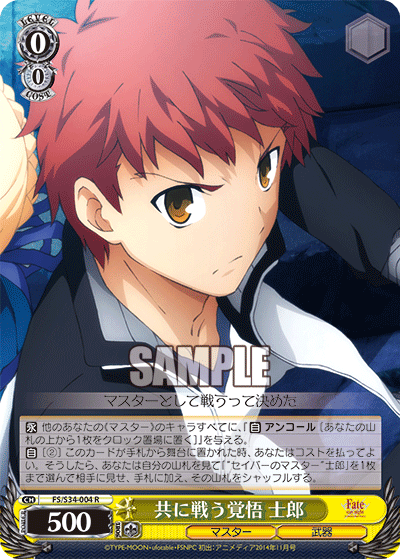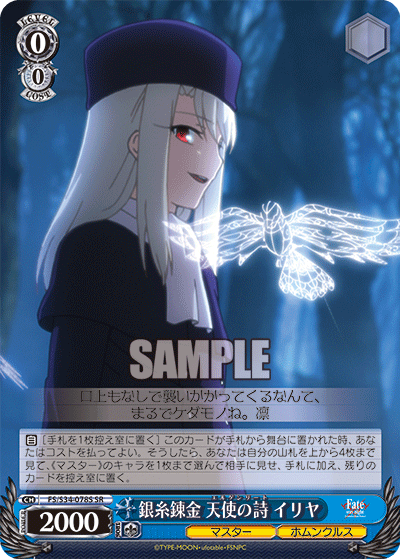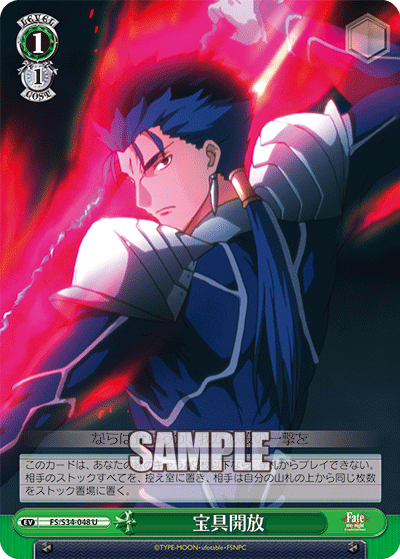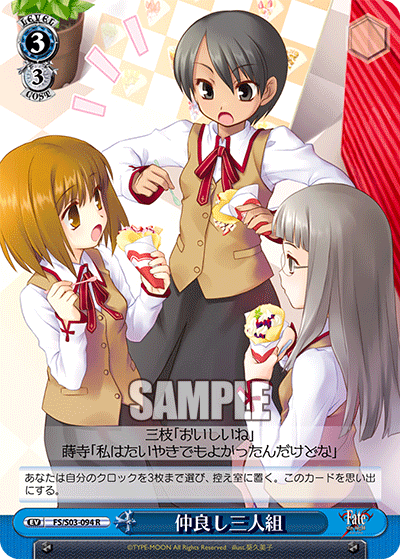While many decks focused on a more powerful endgame, the arrival of Fate’s fourth big booster, Heaven’s Feel, after years following Fate’s Unlimited Blade Works, brought along many key pieces that bolstered a new way of playing the game. In contrast to the more heavy end-game push style, Fate advocated for a relative stall gameplay, looping resources to try to outlast the opponent instead.

One of the most powerful profiles in the game was making a comeback. Previously more known on the 2/1 freefresh Onodera, Archer and Rin above did the same thing by giving you a refresh for free while also drawing you advantage, effectively replacing itself in your hand for a single stock.


Of course, refreshing alone is not enough to piece together the deck. The two cards above were critical in ensuring that the deck could move forward with its game plan. Fate with its large library of cards was prone to have unintended interactions. Shirou above was such a card that gave every <Master>(マスター) character the ability to have clock encore. As such, the deck could easily maintain its field presence at the cost of life. Illya was an Akatsuki which was integral to constantly loop through the deck to fetch cards as needed and mill towards the freefresh requirement.


Another common play was the inclusion of Rider above. Traditionally, finishers would end their opponents by having multiple instances of damage or ensuring damage enters the opponent’s clock. Rider had two simple abilities by first sniping away any character in front of her under 3000 power (after her combo) turn. The other more powerful ability prevented opponents in front of her from front attacking, and thus, for the most part, eliminating most soul damage.
Rider best represents the deck’s main idea. Rather than trying to knock down its opponent, the deck would try to stall out and win overtime as the opponent could no longer keep up with the deck in resources.


FS/S34-048U 宝具開放 (left), FS/S03-094R 仲良し三人組 (right)
Fate also had its own toolbox cards to both handle the mirror match-up and deal with compressed decks. Lancer’s event to the left disrupted decks, and the three friends event to the right gave it an edge in the late game to stall out even further if given the luxury to.
In a game where pushing damage is ideal, Fate pushed forward a completely different game plan that was consistent in mitigating damage as much as possible. Using specific utility pieces from its past sets, Fate was able to scrounge up an entirely different playstyle that warped the game for a short amount of time. Additionally, as a result of this topping deck, Fate was given one of the harshest bans in the game’s history with a total of five of its cards being limited in a pick one-of-five in a single setting. Bushiroad made it vividly clear they would stomp out this stall strategy.